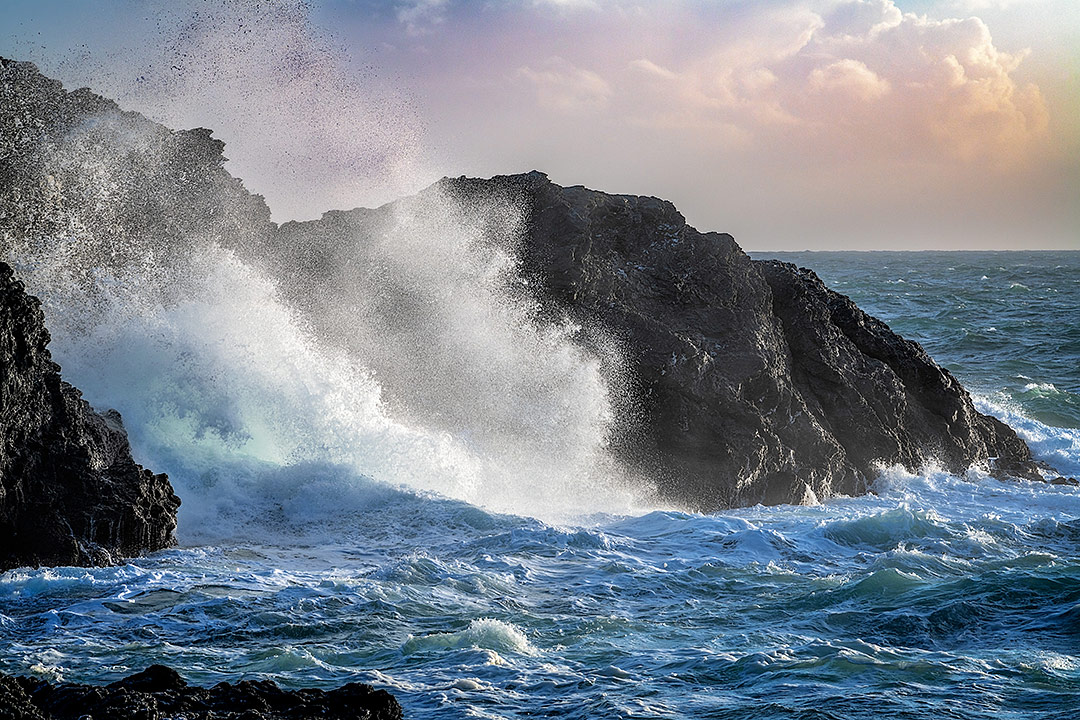One of my greatest impressions during my visit to the fascinating Belle-île-en-Mer was the surge of the mighty Atlantic Ocean on the cliffs of the largest Breton island. So on different days, at different times of the day, in different places, I observed this mighty spectacle, which - for someone who lives far away from the sea - is impressive not only visually, but also acoustically and haptically: The rumbling of the boulders under the surface of the water, the roar of the masses of water thundering against the rocks and the gentle spray carried by the wind onto my skin (and the camera lens) - an experience for all the senses.
From the countless pictures of the surf taken during my stay on Belle-Ile, I chose this one because it says so much: the power of the water, the fine spray created by contact with the rocks and carried away by the wind, the light of the sun refracted both in the spray and in the wet rocks, the rocks that have withstood the force of the ocean for thousands of years.
Claude Monet was already enthralled by this spectacle when he visited the island in 1886. "This is sinister, diabolical, but beautiful and I do not find such a thing elsewhere" he wrote in a letter to his friend Gustave Caillebotte, a French Impressionist painter, art collector, patron and boat builder. The original 15 days Monet planned to stay on the island turned into 75, and other artists such as Henri Matisse, Constantin Kousnetzoff, Maurice Halay and Pierre Cadre were to follow him.
This photograph was taken on the wild south-west coast of the island, facing the open Atlantic Ocean, during my stay at the end of October. There is a beautiful hiking trail along the entire coast where you can really feel the landscape. You can safely leave the car behind and explore the island and the photo spots on foot. Particularly exciting are the frequent changes of weather and light moods, which are a paradise for photographers.


